Second of a series of ships that are low processing power, and as detailed as my device will allow.
The San Antonio class is a class of amphibious transport docks, also called a "landing platform, dock" (LPD), used by the United States Navy. These warships replace the Austin-class LPDs (including Cleveland and Trenton sub-classes), as well as the Newport-class tank landing ships, the Anchorage-class dock landing ships, and the Charleston-class amphibious cargo ships that have already been retired.
The San Antonio class was designed to provide the Navy and U.S. Marine Corps with modern, sea-based platforms that are networked, survivable, and built to operate with 21st century transformational platforms, such as the MV-22 Osprey, the (since canceled) Expeditionary Fighting Vehicle (EFV), air-cushioned landing craft (LCACs), and future means by which Marines are delivered ashore. The ship is more than 45 percent larger than the Austin class, displacing more than 25,000 tons at full load. It carries fewer troops, but has twice as much space for vehicles, landing craft, and aircraft. The ships are also suited to act as recovery ships for spacecraft, with a floodable well deck at the back of the vessel into which a capsule can float; Portland is the recovery ship for the Orion capsule of the Artemis 1 uncrewed Moon-orbiting mission on 11 December 2022.
The project embraced a "Design for Ownership" philosophy; a concurrent engineering approach that injects operator, maintainer, and trainer input into the design development process. The goal was to ensure that operational realities are considered throughout the total ship design, integration, construction, test and life cycle support of the new ships and their systems. This process was intended to improve combat readiness, enhance quality of life, and reduce Total Ownership Costs, and resulted in numerous changes during the project.
The San Antonio class has significant survivability features and computer technology. In addition to Rolling Airframe Missile (RAM) protection from air threats, the class was designed to minimize radar signature. Techniques that reduce radar cross-section (RCS) make the ships more difficult to locate and target. Enhanced survivability features include improved nuclear blast and fragmentation protection and a shock-hardened structure. The fiber-optic shipboard-wide area network (SWAN) connects onboard-integrated systems. The network will allow "plug in and fight" configuration, updating and replacing hardware more easily when newer technology becomes available. Moreover, the class has extensive communications, command, control, and intelligence systems to support current and projected expeditionary warfare missions of the 21st century.
The class is fitted with the integrated Ship Self-Defense System (SSDS). The system fuses the radars and other sensors and controls the weapons systems for an automated fast reaction capability against air threats.
The Advanced Enclosed Mast/Sensors (AEM/S) System mast, a 93-foot-high octagonal structure 35 feet in diameter, is constructed of a multi-layer frequency-selective composite material. It is designed to permit the ship's own sensor frequencies with very low loss while reflecting other frequencies. The tapered octagonal shape of the AEM/S is designed to reduce the radar cross section, and enclosing the antennas provides improved performance and greatly reduces maintenance costs.
The San Antonio-class also incorporates the latest quality of life standards for the embarked Marines and sailors, including sit-up berths, a ship services mall, a learning resource center, and a fitness center. Medical facilities include two operating rooms and 124 beds. Additionally, they are the first USN ships designed to accommodate sailors and Marines of both sexes as part of the crew and embarked troops.
By mid-2016, the Navy and Marine Corps were studying installing a vertical launch system (VLS) into San Antonio-class ships so they could field larger offensive missiles. The original ship concept included two 8-cell Mk 41 VLS in the bow, which is being reexamined to add Tomahawk cruise missiles to support Marines ashore with little modification to the combat system.
Controls
- Throttle for forward movement
- Yaw to steer
Notes
- This ship's landing pad was rather difficult due to complex patterns on it.
Specifications
General Characteristics
- Predecessor War Challenge: The return of the evil (CLOSED)
- Created On Android
- Wingspan 6.2ft (1.9m)
- Length 40.2ft (12.2m)
- Height 11.1ft (3.4m)
- Empty Weight 8,712lbs (3,951kg)
- Loaded Weight 10,288lbs (4,666kg)
Performance
- Power/Weight Ratio 1.31
- Wing Loading 224.9lbs/ft2 (1,098.1kg/m2)
- Wing Area 45.7ft2 (4.3m2)
- Drag Points 4647
Parts
- Number of Parts 117
- Control Surfaces 0
- Performance Cost 318

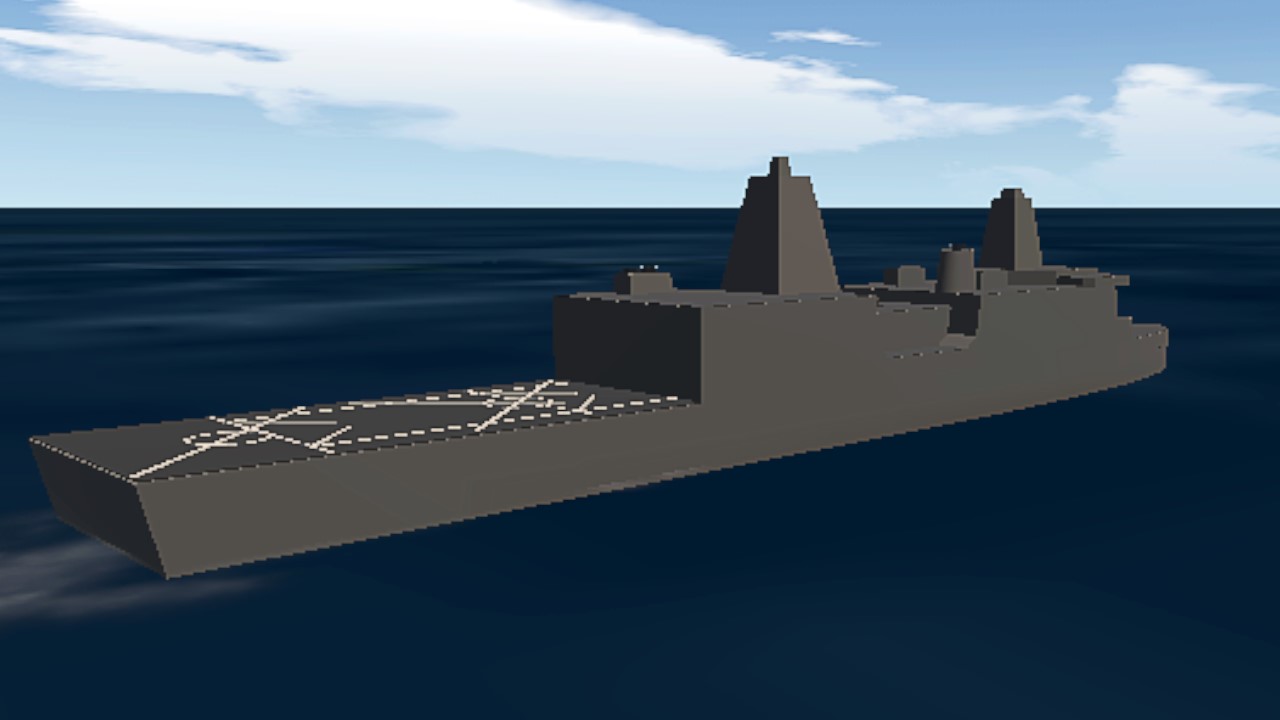
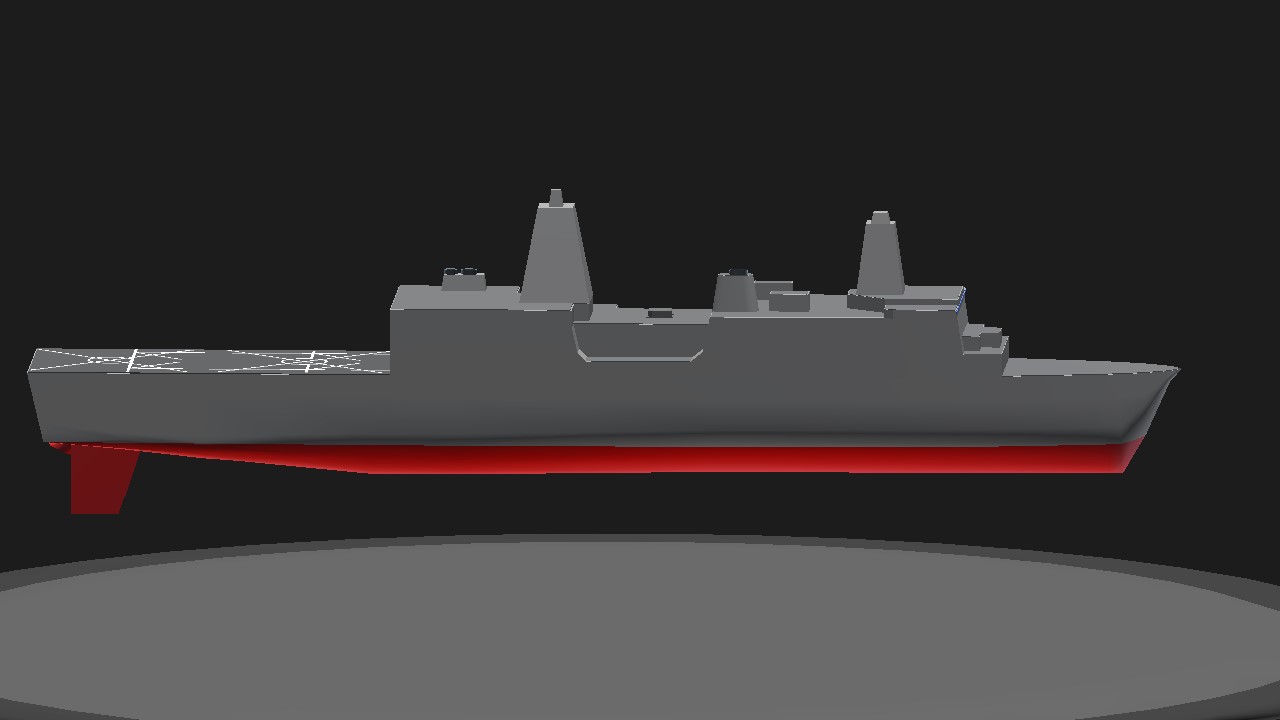
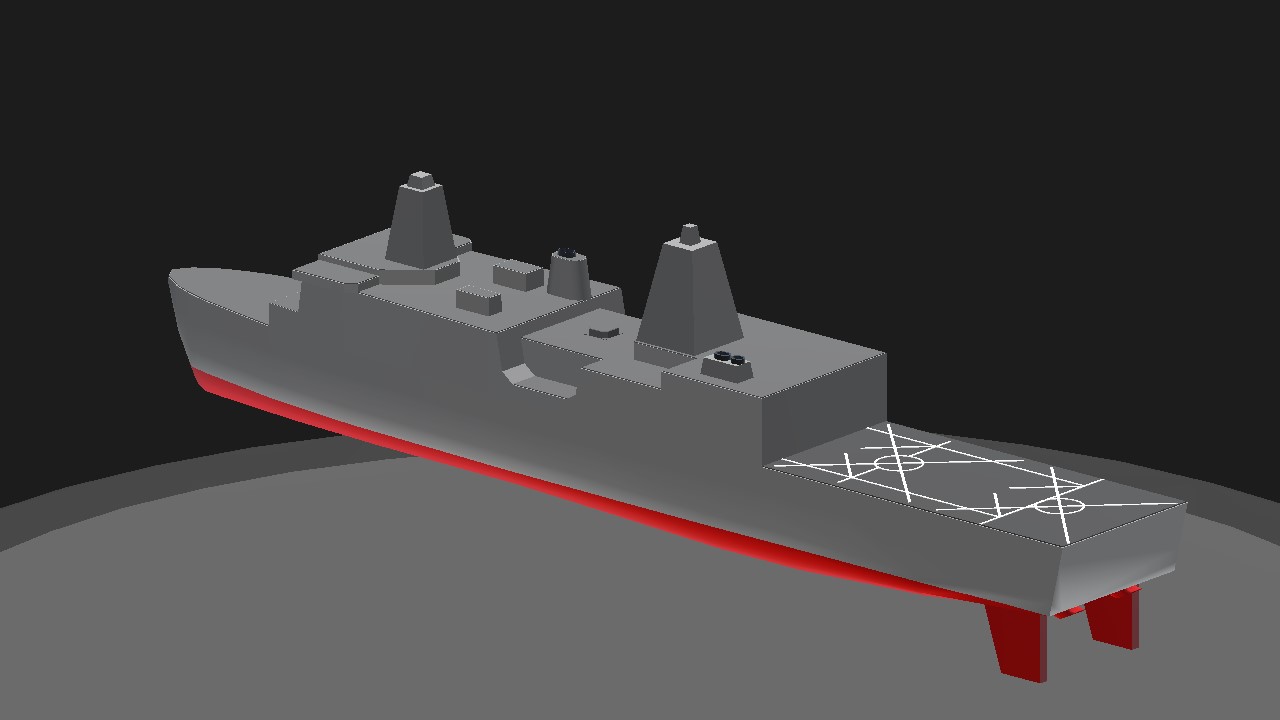
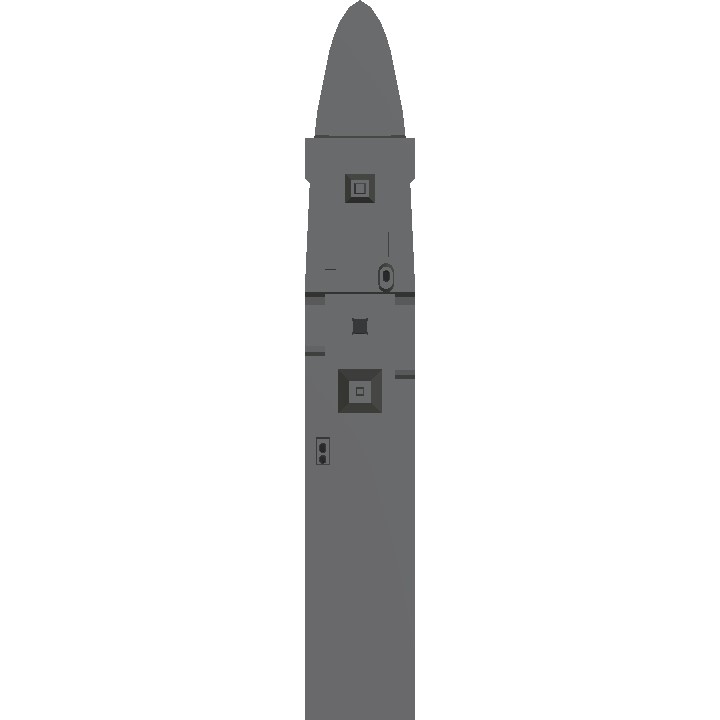
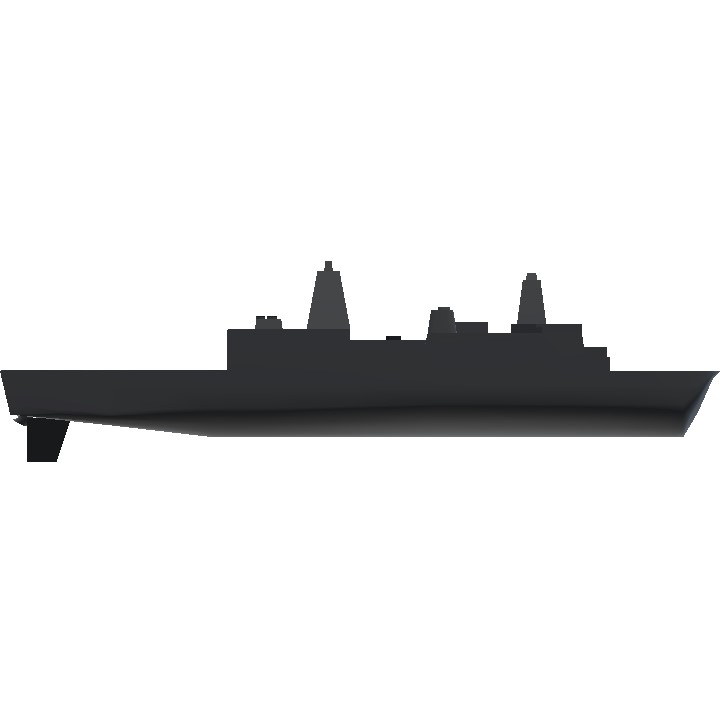
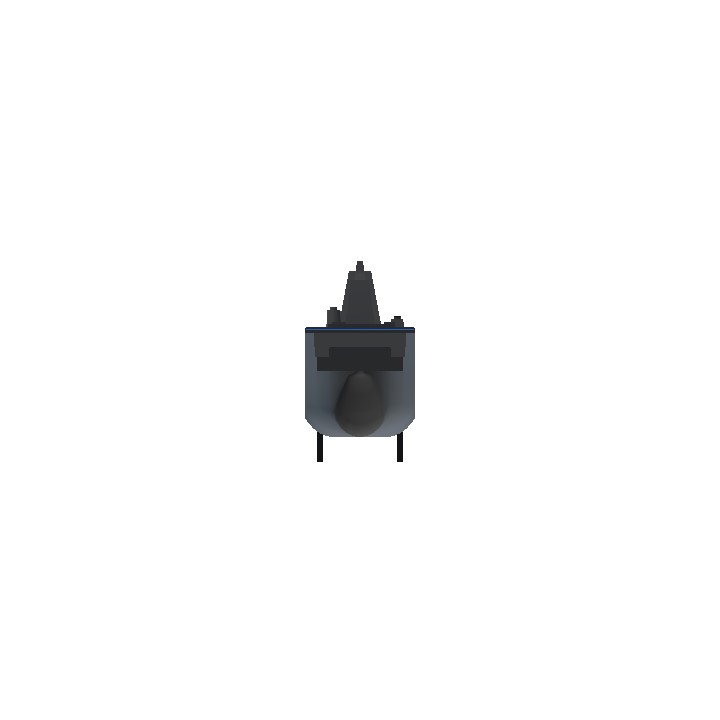
great boat bro congratulation